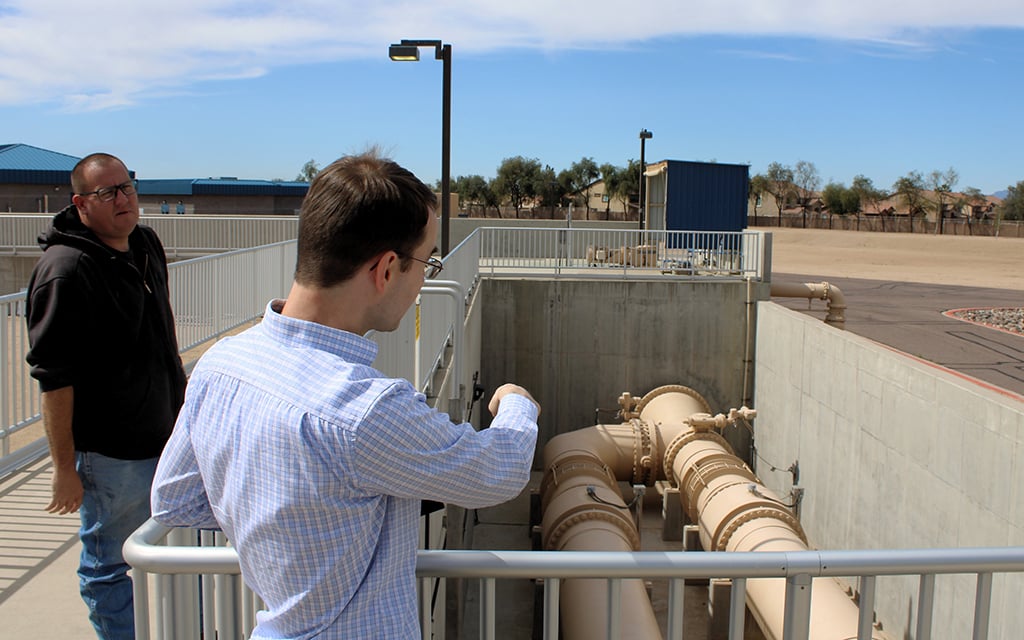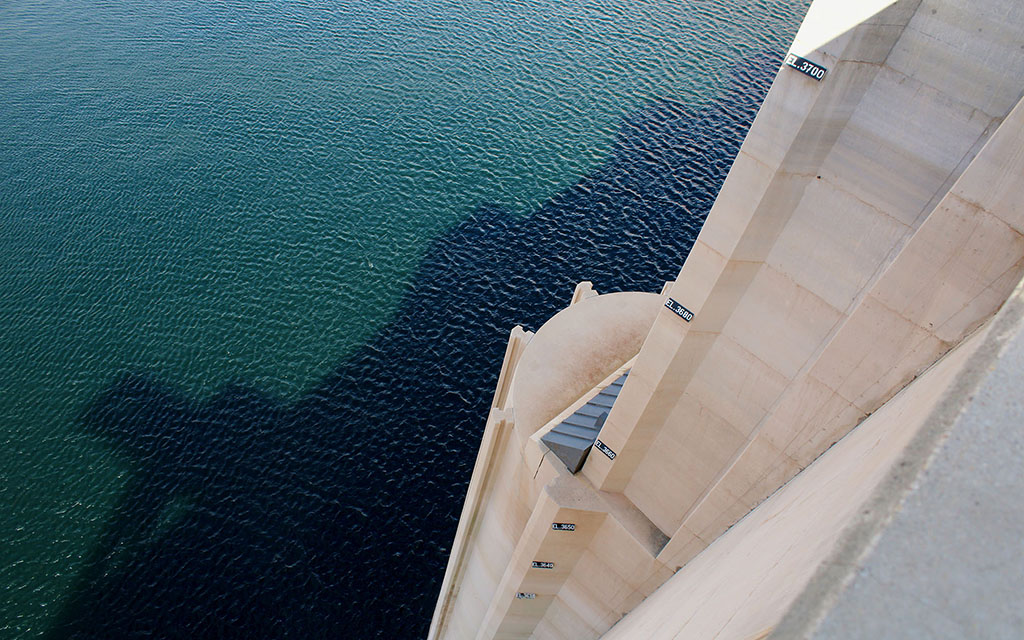Tucson, aiming to trim electric bills and hit carbon neutral by 2045 to fight climate change, will explore creating a public utility
WASHINGTON – A feasibility study in Tucson will explore the creation of a public power utility as the city seeks to cut electric bills and be carbon neutral by 2045. The current contract with Tucson Electric Power expires in 2026, and the city wants to ensure utility practices align with its environmental goals.
Amid heat waves and drought, Arizona Republicans reject expert consensus on climate change as ‘fake science’
WASHINGTON – Arizona heat waves and drought are exacerbated by climate change, experts say, yet Kari Lake and Republicans in Congress dispute the scientific consensus.
Arizona farmers turn to solar panels to shade crops, save water and generate power
WASHINGTON – With Arizona’s blazing sunshine and depleting water sources, agrivoltaics could be used to grow healthy crops in a sustainable way. Federal funding under IRA and REAP is helping farmers get started.
Does Arizona have enough water? Phoenix-area cities are spending big to make sure it does
Phoenix, Peoria and cities across the Valley are focused on adding new water supplies, rather than just using less of the water they already have.
As farmers age and the number of farms shrinks, new growers struggle to get started in the agriculture industry
WASHINGTON – New farmers struggle to find affordable land and markets for their produce as they try to break into the agriculture industry. The USDA offers programs to address some of the hardships.
Experts, beekeepers weigh in on local honey for seasonal allergies
SCOTTSDALE – The evidence that eating local honey can help with allergies is largely anecdotal; what's not in dispute is that local honey is both tastier and healthier than honey at the supermarket, beekeepers and experts agree.
Sporting a greener future: U.S. arenas, stadiums tackle carbon footprint to score environmental wins
PHOENIX – Sports venues are going green by pioneering sustainable design and retrofitting older stadiums with eco-friendly technologies to reduce their environmental impact.
A plumbing issue at Lake Powell dam could mean big trouble for Western water
Damage to the Glen Canyon Dam’s “river outlet works,” a critical set of small tubes near the bottom of the dam that hold back Lake Powell, are raising new concerns that it may become harder to keep the falling Colorado River flowing downstream.
‘A tangible difference’: Phoenix Zoo scientists work to save native species
PHOENIX – Phoenix Zoo scientists are working to save species under threat. The zoo’s website lists nine native species conservation projects that scientists are working on, including the black-footed ferret, Chiricahua leopard frog, cactus ferruginous pygmy-owl, desert pupfish, narrow-headed gartersnake, Huachuca water umbel, springsnail, Mount Graham red squirrel and Gila topminnow.
Cave Creek business aims to train dogs to avoid rattlesnakes in the summer months
PHOENIX – With rattlesnake season reaching its peak in Arizona, professionals warn hikers and pet owners to proceed with caution outdoors. One business in Cave Creek is taking a proactive step to train dogs to avoid the venomous reptiles.
Salton Sea immigrant community experiences high rates of asthma from inhaling dust from the drying sea bed
NORTH SHORE, California – Childhood asthma rates are disproportionately high for immigrant families who live and work near the Salton Sea in Southern California. Scientists say the alarming rate of respiratory problems comes from inhaling dust of decayed fish that ingested toxic materials flowing into the sea from nearby agricultural sites.
As Arizona shifts into warmer weather, beware of rattlesnakes, experts say
PHOENIX – Hikers and adventurers should be aware of increased encounters between humans and rattlesnakes as temperatures climb above 80 degrees. The serpents make their presence known in rural areas and even in homes, especially from March to October.











